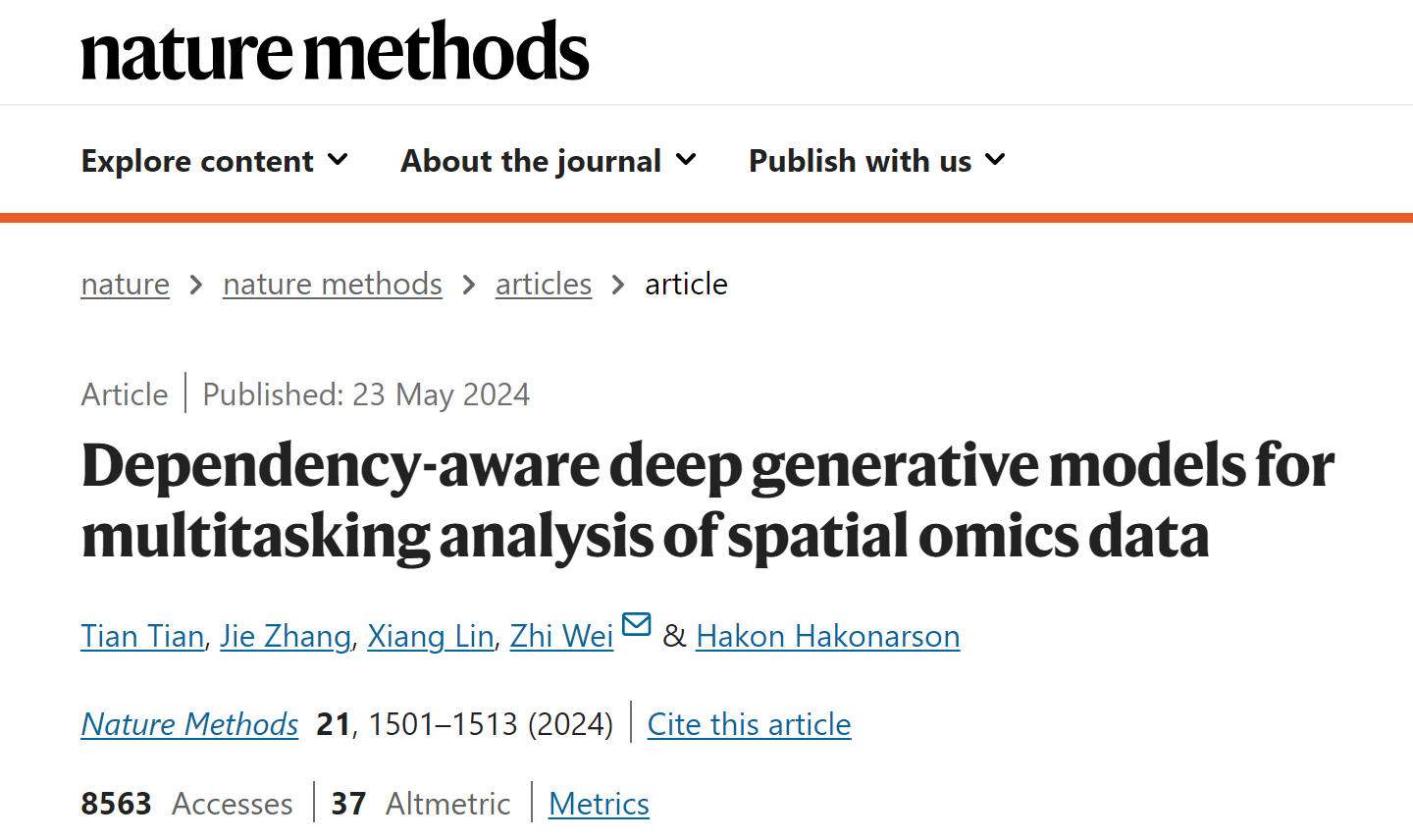In May 2024, the international interdisciplinary journal Nature Methods published an online paper titled "Dependency-aware deep generative models for multitasking analysis of spatial omics data". Wuhan University was listed as the first affiliating institution, with Professor Tian Tian from the School of Artificial Intelligence as the first author. This marks the inaugural publication of our school's bioinformatics research achievements in Nature Methods.

Spatial omics technology represents a major breakthrough in biomedical research in recent years. Unlike single-cell omics, spatial omics simultaneously tracks the spatial positions of spots or cells during sequencing, providing critical spatial information beyond traditional omics data. While this technology has introduced new research perspectives and rapidly advanced biomedical fields, efficiently utilizing spatial data in algorithmic modeling remains an unresolved and highly challenging task. To address this, Professor Tian Tian's team proposed a novel deep learning algorithm for modeling and analyzing spatial omics data, enabling multiple downstream analytical tasks within a unified framework and establishing a new computational paradigm for other spatial omics biological analyses.

This study developed spaVAE, a spatial dependency-aware deep generative model, by integrating Gaussian processes and variational autoencoders (VAEs). The model employs Gaussian processes to describe spatial dependencies between locations, deriving statistical distributions for spatially resolved transcriptomics data. Within a unified framework, spaVAE facilitates dimensionality reduction visualization, clustering, denoising, differential expression analysis, spatial interpolation, and resolution enhancement. Furthermore, the team extended spaVAE to handle diverse spatial omics data types, such as spatial ATAC-seq and spatial CITE-seq, proposing spaPeakVAE and spaMultiVAE variants.
Professor Tian Tian, a National Overseas Postdoctoral Fellowship recipient, has published over 30 high-impact papers in journals including Nature Methods, Nature Machine Intelligence, Nature Communications, Genome Research, and EBioMedicine.
This research was supported by the National Overseas Postdoctoral Fellowship Program.
Paper link: https://www.nature.com/articles/s41592-024-02257-y